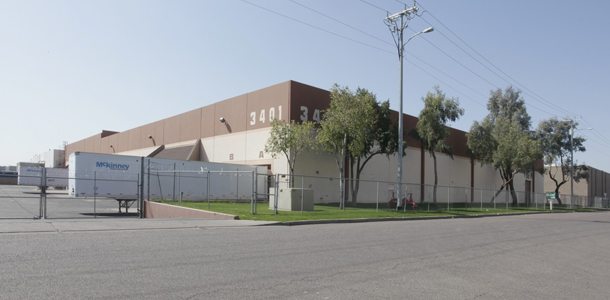The Metro Phoenix industrial market has reached a point of healthy equilibrium with overall vacancy at 11.8 percent and steady absorption, according to a report released today by Cushman & Wakefield of Arizona, Inc.
“Transactions have become far more cooperative in this environment where landlords and tenants have reached a position of more equivalent expectations,” says Jim Wilson, executive director with Cushman & Wakefield. “This stabilization has created an environment where neither landlord nor tenant has an advantage over the other in the marketplace.”
Following the overbuilt conditions of the recent recession, the Metro Phoenix market has steadily eroded its large vacancies with positive net absorption. Year-to-date, approximately 1,663,750 square feet of net absorption has taken place across the valley. The majority of that absorption took place in the area’s largest industrial submarket, Southwest Phoenix, where approximately 1,251,459 square feet of net absorption was achieved in the first half of this year. Included in that net absorption is WinCo’s 800,000-square-foot distribution center and Living Spaces’ facility totaling 437,000 square feet.
“Trends today are for large, people-intensive operations that require substantial parking and strong amenity offerings. Landlords that hold properties with great curb appeal, location and surrounding employee services will win the tenant every time in this market.”
Also according to Wilson, “We are not seeing many 300,000+ square foot tenants in the market. Those sizable users help us eat up inventory quickly. According to our experience, businesses are becoming healthier, but they are not expanding and taking on large amounts of expense. Companies became very lean during the recession and are working to achieve as much productivity as possible while maintaining the more pared down size and expense. Companies remain on the sidelines, hesitant to commit to increased space and overhead.”
Overall vacancy rates vary throughout the valley. Chandler currently posts one of the highest vacancies at 18.1 percent. This is due somewhat to the more than 2.4 million square feet of new product in that area that was completed earlier this year. According to Wilson, the submarket is in high demand and the vacant space will be absorbed without difficulty. Northwest Phoenix has the highest overall vacancy rate at 20.9 percent, but the submarket is relatively small, so a few leases will create a swift decline in that figure. West Phoenix and Northeast Phoenix post the lowest vacancies with 6.2 percent and 6.6 percent.
Rental rates in the industrial market have stabilized and are beginning to rise at a steady, but limited pace. Direct weighted average net rental rates now rest at $0.59 per square foot per month, with the Deer Valley area asking approximately $0.97 per square foot and Southwest Phoenix averaging an asking rate of $0.36 per square foot. The differences in these rates are reflective of product type as well. Southwest Phoenix is a hub for large box warehouse/distribution space, while Deer Valley contains more flex business park space that can be used for light storage and office uses.
As net absorption erodes the large inventory of space, some developers with deep pockets are building again. Currently, approximately 3,040,828 square feet of new industrial space is under construction in Metro Phoenix. Additionally, 3,946,387 square feet have already been delivered to market during 2014. The majority of this space is located in Chandler and Southwest Phoenix. Spectrum Ridge in Deer Valley will come online in November of this year. In addition, American Furniture Warehouse’s 600,000-square-foot facility in the West Valley will be completed. Of the nearly seven million square feet slated for delivery this year, more than one million of that represents build-to-suit facilities.
”Strategizing development of space is a game of significant risk,” says Wilson. “Tenants are like consumer shoppers. They want to enter the store and find bread on the shelf. The lead-time to create industrial space requires developers to guess when the demand will be there. At this point we are seeing a variety of developers assuming that 2015 and 2016 will be a time of high demand, so they have started work on new product. If too many developers put bread in the oven at the same time, there will undoubtedly be an overabundance on the shelf and some will go stale or mold. It is important that the development community not overbuild the market again so we can maintain the equilibrium we currently enjoy. Fortunately, in this environment, only very strong developers with the ability to hold on to assets long-term are able to take part in the industry.




